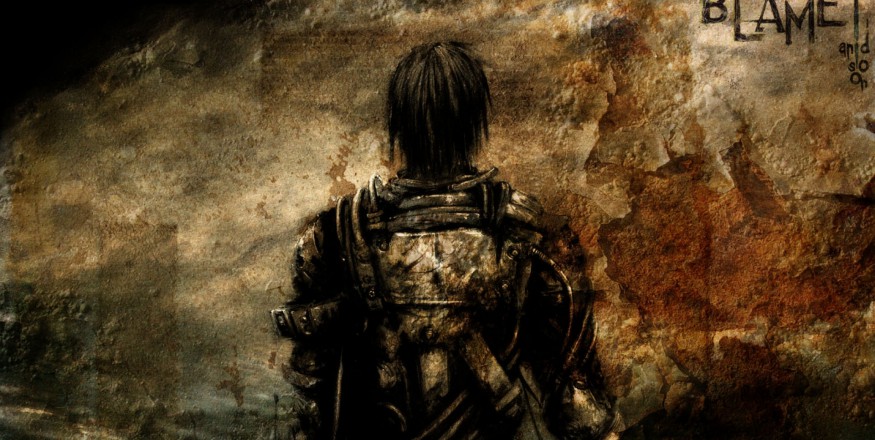The Lesser Key of Solomon, also known as Clavicula Salomonis Regis or Lemegeton, is an anonymous grimoire (or spell book) on demonology. It was compiled in the mid-17th century, mostly from materials a couple of centuries older. It is divided into five books—the Ars Goetia, Ars Theurgia-Goetia, Ars Paulina, Ars Almadel, and Ars Notoria.1141Please respect copyright.PENANAY0xr3gKZaS
Ars Goetia1141Please respect copyright.PENANARTdKwbmiaV
The most obvious source for the Ars Goetia is Johann Weyer's Pseudomonarchia Daemonum in his De praestigiis daemonum. Weyer does not cite, and is unaware of, any other books in the Lemegeton, indicating that the Lemegeton was derived from his work, not the other way around. The order of the spirits was changed between the two, four additional spirits were added to the later work, and one spirit (Pruflas) was omitted. The omission of Pruflas, a mistake that also occurs in an edition of Pseudomonarchia Daemonum cited in Reginald Scot's The Discoverie of Witchcraft, indicates that the Ars Goetia could not have been compiled before 1570. Indeed, it appears that the Ars Goetia is more dependent upon Scot's translation of Weyer than Weyer's work in itself. Additionally, some material was used from Heinrich Cornelius Agrippa's Three Books of Occult Philosophy, the Heptameron by pseudo-Pietro d'Abano, and the Magical Calendar.
Weyer's Officium Spirituum, which is likely related to a 1583 manuscript titled The Office of Spirits, appears to have ultimately been an elaboration on a 15th-century manuscript titled Le Livre des Esperitz (of which 30 of its 47 spirits are nearly identical to spirits in the Ars Goetia).
In a slightly later copy made by Thomas Rudd, this portion was labelled "Liber Malorum Spirituum seu Goetia", and the seals and demons were paired with those of the 72 angels of the Shemhamphorasch, who were intended to protect the conjurer and control the demons he summoned. The angelic names and seals were derived from a manuscript by Blaise de Vigenère, whose papers were also used by Samuel Liddell MacGregor Mathers in his works for the Hermetic Order of the Golden Dawn. Rudd may have derived his copy of Liber Malorum Spirituum from a now-lost work by Johannes Trithemius, who taught Agrippa, who in turn taught Weyer.
This portion of the work was later translated by S. L. MacGregor Mathers and published by Aleister Crowley under the title The Book of the Goetia of Solomon the King. Crowley added some additional invocations previously unrelated to the original work, as well as essays describing the rituals as psychological exploration instead of demon summoning.1141Please respect copyright.PENANABl81zJryZT
The Seventy-Two Demons
The demons' names (given below) are taken from the Ars Goetia, which differs in terms of number and ranking from the Pseudomonarchia Daemonum of Weyer. As a result of multiple translations, there are multiple spellings for some of the names, which are given in the articles concerning them.
1) King Bael1141Please respect copyright.PENANAUjK08w4Lrk
2) Duke Agares1141Please respect copyright.PENANASU1JSfxiV6
3) Prince Vassago1141Please respect copyright.PENANA6Ge6gB0tJB
4) Marquis Samigina1141Please respect copyright.PENANAKh6iuXMdJm
5) President Marbas1141Please respect copyright.PENANAjjqF9yugjr
6) Duke Valefor1141Please respect copyright.PENANAd5ZmwEvkWU
7) Marquis Amon1141Please respect copyright.PENANA9wIFJjRcSy
8) Duke Barbatos1141Please respect copyright.PENANAaPTWww4hZQ
9) King Paimon1141Please respect copyright.PENANA8ec0NLav1c
10) President Buer1141Please respect copyright.PENANAPEZyTWNInR
11) Duke Gusion1141Please respect copyright.PENANAeHA3R07ATf
12) Prince Sitri1141Please respect copyright.PENANAOIedC9si8E
13) King Beleth1141Please respect copyright.PENANA7Yc12gT7Tq
14) Marquis Leraje1141Please respect copyright.PENANAizuC2cDwym
15) Duke Eligos1141Please respect copyright.PENANA9NAV0W8ZUi
16) Duke Zepar1141Please respect copyright.PENANAMC0Ol4d7JI
17) Count/President Botis1141Please respect copyright.PENANA6XA5ClnvWY
18) Duke Bathin1141Please respect copyright.PENANAExmJdZFw2B
19) Duke Sallos1141Please respect copyright.PENANAPhtHVDHOUM
20) King Purson1141Please respect copyright.PENANA1tSgpAoEFY
21) Count/President Marax1141Please respect copyright.PENANAHjLCrdvniE
22) Count/Prince Ipos1141Please respect copyright.PENANAoxiCev3tMP
23) Duke Aim1141Please respect copyright.PENANAgftfxzA3qF
24) Marquis Naberius1141Please respect copyright.PENANAhjvQIJrwZn
25) Count/President Glasya-Labolas1141Please respect copyright.PENANAosvUaydwFZ
26) Duke Buné1141Please respect copyright.PENANArkFm5I4Gdv
27) Marquis/Count Ronové1141Please respect copyright.PENANAeql0VnlmJ8
28) Duke Berith1141Please respect copyright.PENANAaRx1ls1wD1
29) Duke Astaroth1141Please respect copyright.PENANAVxWzwlZasC
30) Marquis Forneus1141Please respect copyright.PENANAuE753szrca
31) President Foras1141Please respect copyright.PENANAwhnsrtOF4G
32) King Asmoday1141Please respect copyright.PENANAemkjNmMaz4
33) Prince/President Gäap1141Please respect copyright.PENANANx2SEwrzbs
34) Count Furfur1141Please respect copyright.PENANA84yVA4B58v
35) Marquis Marchosias1141Please respect copyright.PENANAUif2UGMqqr
36) Prince Stolas1141Please respect copyright.PENANAU3k5PPKi71
37) Marquis Phenex1141Please respect copyright.PENANAEUulgPjXEX
38) Count Halphas1141Please respect copyright.PENANANmdGYWCqnk
39) President Malphas1141Please respect copyright.PENANAae3iOKbp7q
40) Count Räum1141Please respect copyright.PENANA1wkmCrcDje
41) Duke Focalor1141Please respect copyright.PENANAPMfb7XTmjt
42) Duke Vepar1141Please respect copyright.PENANAo80bwbSCrb
43) Marquis Sabnock1141Please respect copyright.PENANARpmr6iqq11
44) Marquis Shax1141Please respect copyright.PENANAihFXHPUR28
45) King/Count Viné1141Please respect copyright.PENANA3Oj9c1x3es
46) Count Bifrons1141Please respect copyright.PENANAlgeIwIFA5D
47) Duke Vual1141Please respect copyright.PENANAiRQjQnEng0
48) President Haagenti1141Please respect copyright.PENANA3prtdWV2kQ
49) Duke Crocell1141Please respect copyright.PENANA5RbxyMKpkB
50) Knight Furcas1141Please respect copyright.PENANAorHOxYA2l2
51) King Balam1141Please respect copyright.PENANAn8BlZQODh1
52) Duke Alloces1141Please respect copyright.PENANAFeSCMaXnLc
53) President Caim1141Please respect copyright.PENANAGpn5iNpQPB
54) Duke/Count Murmur1141Please respect copyright.PENANAHTW9arkSqa
55) Prince Orobas1141Please respect copyright.PENANAkegKewCbl2
56) Duke Gremory1141Please respect copyright.PENANA4iAtRnZmF4
57) President Ose1141Please respect copyright.PENANAEH2anf3wUT
58) President Amy1141Please respect copyright.PENANAiQb3xTtO6r
59) Marquis Orias1141Please respect copyright.PENANA2kwfKC7YF0
60) Duke Vapula1141Please respect copyright.PENANAiCc3M1t0k6
61) King/President Zagan1141Please respect copyright.PENANAH2tNKySAOm
62) President Valac1141Please respect copyright.PENANAl1SkU3b0jd
63) Marquis Andras1141Please respect copyright.PENANAbJw6wPCNAI
64) Duke Flauros1141Please respect copyright.PENANAB2NlRLAMuL
65) Marquis Andrealphus1141Please respect copyright.PENANAMiXpOGZlMz
66) Marquis Kimaris1141Please respect copyright.PENANAufRc9I8CQe
67) Duke Amdusias1141Please respect copyright.PENANAhhveA7SP5Z
68) King Belial1141Please respect copyright.PENANAUspt6MLq8D
69) Marquis Decarabia1141Please respect copyright.PENANAqu5ZgNOFNz
70) Prince Seere1141Please respect copyright.PENANAtswLREwkV7
71) Duke Dantalion1141Please respect copyright.PENANAfqffMiEoyK
72) Count Andromalius
The demons are described as being commanded by four kings of the cardinal directions: Amaymon (East), Corson (West), Ziminiar (North), and Gaap (South). A footnote in one variant edition instead lists them as Oriens or Uriens, Paymon or Paymonia, Ariton or Egyn, and Amaymon or Amaimon, alternatively known as Samael, Azazel, Azael, and Mahazael (purportedly their preferred rabbinic names).[10] Agrippa's Occult Philosophy lists the kings of the cardinal directions as Urieus (East), Amaymon (South), Paymon (West), and Egin (North); again providing the alternate names Samuel (i.e. Samael), Azazel, Azael, and Mahazuel. The Magical Calendar lists them as Bael, Moymon, Poymon, and Egin, though Peterson notes that some variant editions instead list '"Asmodel in the East, Amaymon in the South, Paymon in the West, and Aegym in the North"; "Oriens, Paymon, Egyn, and Amaymon"; or "Amodeo [sic] (king of the East), Paymon (king of the West), Egion (king of the North), and Maimon."1141Please respect copyright.PENANA5Fow9Va166
Ars Theurgia Goetia1141Please respect copyright.PENANAaAujc2gIQD
The Ars Theurgia Goetia mostly derives from Trithemius's Steganographia, though the seals and order for the spirits are different due to corrupted transmission via manuscript. Rituals not found in Steganographia were added, in some ways conflicting with similar rituals found in the Ars Goetia and Ars Paulina. Most of the spirits summoned are tied to points on a compass, four Emperors tied to the cardinal points (Carnesiel in the East, Amenadiel in the West, Demoriel in the North and Caspiel in the South), sixteen Dukes tied to cardinal points, inter-cardinal points, additional directions between those. There are an additional eleven Wandering Princes, totaling thirty one spirit leaders who each rule several to a few dozen spirits.1141Please respect copyright.PENANA7389LOBiOU
1141Please respect copyright.PENANAH4HQhcgXTh
Ars Paulina1141Please respect copyright.PENANApkLHhtXGQ9
Derived from book two of Trithemius's Steganographia and from portions of the Heptameron, but purportedly delivered by Paul the Apostle instead of (as claimed by Trithemius) Raziel. Elements from The Magical Calendar, astrological seals by Robert Turner's 1656 translation of Paracelsus's Archidoxes of Magic, and repeated mentions of guns and the year 1641 indicate that this portion was written in the later half of the seventeenth century. Traditions of Paul communicating with heavenly powers are almost as old as Christianity itself, as seen in some interpretations of 2 Corinthians 12:2-4 and the apocryphal Apocalypse of Paul. The Ars Paulina is in turn divided into two books, the first detailing twenty-four angels aligned with the twenty-four hours of the day, the second (derived more from the Heptameron) detailing the 360 spirits of the degrees of the zodiac.1141Please respect copyright.PENANA3FokYFXRvc
Ars Almadel1141Please respect copyright.PENANAuwEQ2tgDnZ
Mentioned by Trithemius and Weyer, the latter of whom claimed an Arabic origin for the work. A 15th-century copy is attested to by Robert Turner, and Hebrew copies were discovered in the 20th century. The Ars Almadel instructs the magician on how to create a wax tablet with specific designs intended to contact angels via scrying.1141Please respect copyright.PENANAVbvs5wrOPD
Ars Notoria1141Please respect copyright.PENANAzQFHhGjc7W
The oldest known portion of the Lemegeton, the Ars Notoria (or Notory Art) was first mentioned by Michael Scot in 1236 (and thus was written earlier). The Ars Notoria contains a series of prayers (related to those in The Sworn Book of Honorius) intended to grant eidetic memory and instantaneous learning to the magician. Some copies and editions of the Lemegeton omit this work entirely; A. E. Waite ignores it completely when describing the Lemegeton. It is also known as the Ars Nova.1141Please respect copyright.PENANAZCaCqJbqNz
1141Please respect copyright.PENANAXfpne5pQ4Q
It has also been said to be the origin of Pandora's box and where the seven deadly sins were born.
1 Gula (gluttony)1141Please respect copyright.PENANAeO9f2hjis3
2 Luxuria (lust, fornication)1141Please respect copyright.PENANAt48FwMHMo0
3 Avaritia (avarice/greed)1141Please respect copyright.PENANAh7XQluTHV1
4 Superbia (pride, hubris)1141Please respect copyright.PENANAgyzoiYdoya
5 Invidia (Envy)1141Please respect copyright.PENANAptT8HobMkK
6 Ira (wrath)1141Please respect copyright.PENANAPhWk5AjdqO
7 Acedia (sloth)1141Please respect copyright.PENANAZNnFvPzOZp
If you look any further into it, beware your surrounding... You will uncover, the truth.
ns216.73.216.65da2





















